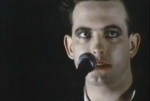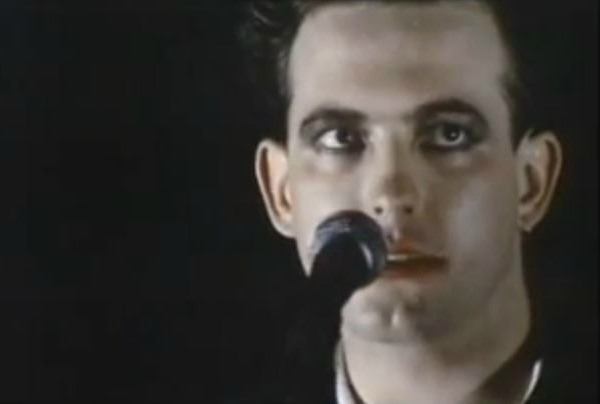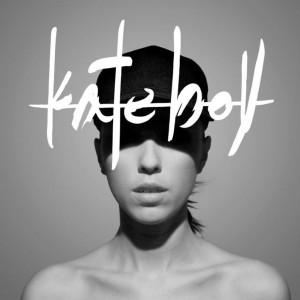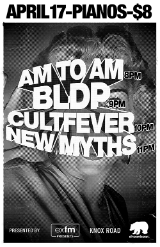 
I first caught a glimpse of a dewigged Robert Smith on a spotty VHS copy of “The Cure: In Orange,” a videotape a friend popped into his VCR and told me, then in 1998 when I first started playing the bass guitar, “man, look at Simon, you need to learn how to play like that.” To see Simon Gallup at that point in the Cure’s history, during the heyday of their reign over the goth-pop worshiping masses in the mid-80s, was a moment I will never forget. Strumming his bass during a smoke-hazed set that included some of my personal favorite Cure songs, such as “Push” and “A Forest,” kept me glued to the screen in awe of the grandiose setting, and equally magnificent performance. For me, at that very moment, Simon Gallup playing his bass and wearing all black was the coolest thing I had ever seen.
Continue reading “The Cure: In Orange” →


There you have it, it’s live. We don’t usually post newsy news, but this one is…uniquely grand. After months of teaser videos and guerrilla marketing maneuvers that annoyed even their most die-hard fans; Arcade Fire’s fourth full-length studio album Reflektor is streaming on YouTube. It’s live, and well, it’s a lyric video of epic proportions.

This is all happening five days ahead of release, and the entire record (85-minutes in length) is streaming on YouTube to the a classic Brazilian movie “Black Orpheus.” Watching this reminds me of the classic Wizard of Oz film to Pink Floyd’s Dark Side of the Moon. And yes, there are occasional moments of synchronicity in “Black Orpheus” that seem to match the music in Reflekor. It’s a trip man, and worth spending 85-minutes watching a Brazilian film you probably haven’t heard of.
Continue reading Arcade Fire’s ‘Reflektor’ Lyric Video is Live! →

“That’s it, right there,” I said to myself, “right when the bass line hits, 40-seconds in, the sound grabs you like a hungry beast looking for satisfaction. ” The crunching guitars and driving drums on “Swimming Pool,” the opening track on the FatCat debut of West Sussex trio TRAAMS, is a bodacious opener […]

In 2011, New Zealand’s The Naked and Famous released their synth-pop debut Passive Me, Aggressive You; which included the sugary electro-pop anthem “Young Blood,” which hit the radio like a runaway train carrying a cargo of starburst choruses, metallic synths, and soaring vocals. With comparisons to early MGMT floating around the blogosphere (which wasn’t fair, if you ask me), The Naked and Famous established themselves, rather quickly, as the electro-pop outfit you’d expect to hear on video game soundtracks and cable TV.

Then something happened: Thom Powers (vocals/guitar) and Alisa Xayalith (vocals/keyboard), toured the world on some 200 blistering dates, settled down in Los Angeles (Hollywood, to be exact), and began to get a bit melancholic in the process. The overwhelming amount of tourists, the constant feeling of being trapped in a giant theme park, and the bro’d-out anthems at Hollywood nightclubs were a bit much for the artsy New Zealanders. So they packed up their bags and headed over to the Laurel Canyon, a place of rock ‘n’ roll legend, to began working on new material under the influence of raging emotions, alt-rock tendencies, and the kindred spirits of Joni Mitchell, Carole King, and Carly Simon.
But before landing in L.A., the endless tour dates sharpened the organic elements in their sound, and allowed them to create a live show that now includes a psychedelic explosion of lights, industrial flourishes, and a loudness of sound that rivals early shoegaze pioneers like My Bloody Valentine (just the volume), and brings all the dazzling stage show of a massive touring pop machine.
Continue reading Colorful Electricity: The Naked and Famous →


“The world used to be silent / Now it has too many voices.”
– Savages (Silence Yourself Manifesto)
As I prepare to see Savages at the Fonda Theatre in L.A. tonight, I look back at my first experience seeing this band earlier this year.
Jerking her head back-and-forth, with sudden and purposeful movements, Jehnny Beth’s dark, piercing black pupils slice through the crowd’s veneer of hipster-euphoria like a Katana sword through a watermelon. Her stage presence is as impressive as Ian Curtis during the genesis of Joy Division, and one day, we’ll all be talking about her ability to own a crowd. So if you weren’t already aware, Beth, the vocalist and lyricist of UK-based quartet Savages, is driven to be taken quite seriously. For her, Savages is fine art; a gallery showcase of her soul, and to be taken seriously as a proper artist is expected.

The Hipster Gestapo at the El Rey, with their heads spinning as they text their fellow KCRW-listening groupies about the “Next Joy Division,” seem dumbfounded at the monochromatic intensity in the French-born singer’s eyes. As the white lights reveal the wrinkles in their all-black outfits; bass player Ayse Hassan quickly stands out sonically with the pummeling bass line for “City’s Full,” which has the bassist bouncing behind her pearl white P Bass like a possessed beatnik on a pogo stick. The ferocious rhythm section of Savages is the byproduct of Hassan’s experimental punk plucking; smashed together with the outright hydrogen explosion of crashing cymbals and frenetic hi-hat bravado of their drummer, Fay Milton, who is known to have an unconventional warm-up routine that requires isolation and focus. Milton’s virtuosity behind the kit is one of the pillars that will hold this band above their peers, in a different stratosphere, for as long as they wish to occupy the space.
Continue reading Nothing Romantic About UK’s Savages →


The sheer scope of vision involved in creating and executing concept art requires an incubation process that in today’s music industry, is almost impossible to accomplish. While concept albums are churned out at a feverish pace (even John Mayer dabbles in the space; which should annoy you), a group or a solo artist that symbolizes an idea (a clear artistic vision), isn’t very common in an industry that continues to value marketability over artistic merit. But every now and again, a ‘scene’ emerges in a part of the world, like grunge in Seattle or techno in Detroit, that offers the proper environment for art to develop without the controlling arms of industry, or worse, a Svengali manager in the mold of Kim Fowley. Right now, actually for the past few years, Sweden and Australia seem to be hotbeds for giving birth to synth-based electronic masters that have taken the states by storm. The Knife might have opened the floodgates in 2006 with Deep Cuts and Silent Shout, but today’s scene seems to be electrified with a diverse range of artists that include NONONO and Lykke Li (both from Sweden), Flume (from Australia), and Crystal Castles (also from Australia). So when I heard about the magnetic blend of Swedish and Australian musicians into one electro-pop ‘concept band,’ titled androgynously as KATE BOY, I knew I had to explore their sound during the incubation phase.
Having been notified the group would be coming to Los Angeles to play an under-the-radar gig at the Echoplex over the weekend, I thought I’d check them out during the genesis of their live act (which is still developing). In 2012, KATE BOY caused a bit of stir in the indie scene with singles “Northern Lights” and “In Your Eyes,” which are included in their EP Northern Lights. Not on the EP, but worth mentioning, is the tribal drum-driven ’80s-sounding, a-little-bit Peter Gabriel (on the more bouncy-side of 1982’s Security), “The Way We Are,” which happens to be my favorite track from KATE BOY. The pummeling robotic synth-bass and electric drums on the track hooked me from the start, but once I deciphered the message, “The Way We Are” stood out as KATE BOY’S breakthrough cut. “There’s been too much poison in the system / festering toxins I am in round / got to get this out of my head / out in the air” melodically whispers vocalist Kate Akhurst, who lyrically builds upon the emancipation theme of their music over a hodgepodge of electro-pop perfection brought to life during the climatic group drumming piece (killer live, seriously), when all four members attack the drums into a climax that sends the track soaring right into the stratosphere.

Continue reading The Kate Boy Collective →


The ’90s were the last, and in fact, the most definitive epoch in the music discovery evolution that grew from early DJs introducing new singles on the radio, to the music streaming ‘arms race’ that has managed to reduce the experience of finding a new band to a Google search, a click of the mouse, or spending five minutes on iTunes listening to bands that have nice headshots.
Once upon a time, I would venture into a Backside Records (because that’s what you did), or aimlessly roam the aisles of a Virgin Megastore; reveling in the ‘shot in the dark’ experience (think Kurt Cobain shopping in a Salvation Army in Aberdeen), of buying a record that had twelve tracks, all of which I had never heard before the five-minutes I spent on a dirty headphone sampling booth, which required the dedication of a music fan willing to purchase new ‘merch’ at a gig, even push through a pit (risking bodily harm) to get close enough to feel the spray of sweat from the bass players fingertips. It was a time where unless you were vacuous enough to subscribe to “free” CD mailers from Columbia House, you would have to engage in a music hunting bloodsport to discover new bands that weren’t being reviewed by Rolling Stone or part of an MTV music video show hosted by Kennedy or Kurt Loder. All of which, if you’ve been living in a cave since 1998, no longer exist.
Ellen Kempner, now nineteen-years-old, was born right around the time Kurt Cobain was found dead in his Lake Washington greenhouse. She’s a product of the ’90s, and while she may not have had the opportunity to see Shannon Hoon’s acid-induced Woodstock performance, or purchase Vans and flannel-shirts without being ‘vintage,’ she somehow seems to perfectly tap into the insular, somewhat quirky, and angst-filled emotions that so many artists embodied during the ’90s — when being sarcastically unhappy was the topic of reality TV shows and song lyrics that embodied the now extinct remnants of ‘Seattle Sound.’
[soundcloud url=”http://api.soundcloud.com/tracks/106215890″ params=”” width=” 100%” height=”166″ iframe=”true” /]
Continue reading Palehound: “Pet Carrot” →

You’d think a mad scientist — some moonlighting hacker who mastered the codes to a complex DJ software — would be responsible for the laser-beam funk that resonates out of every Body Language track. Wrong, it’s just four kids from Brooklyn influenced by Brian Wilson and from the sounds of it; Studio 54 […]

“What would you do, if I sang out of tune,” echoes in the hearts of millions as the famous lyrics first penned by Lennon and McCartney (more of a ‘Paul song,’ no question), and later endured by Joe Cocker’s 1969 cover and subsequent opening theme for the classic TV show, The Wonder Years. Clearly, the Cocker version reigns supreme with its bluesy progression provided by Jimmy Page’s stinging guitar, topped with a ferocious vocal performance by Cocker that seems to release enough tension to wipe out a city. The soulful backup singers and brilliant eight-minute Woodstock performance highlighted in the ’69 documentary (where Cocker’s band admitted to being high on acid), reduces the Ringo Starr-sung version down to more of a spoof than a real Beatles tune.
Rolling Stone recently listed the Cocker version as one of the “Best Vocal Performances in Rock History,” which is no surprise to anyone willing to spend a few minutes and watch Cocker’s visceral attack on YouTube. “With a Little Help” assisted in propelling Cocker into the stratosphere along with his ’69 debut LP — which included a sultry version of the Animals’ classic, “Don’t Let Me Be Understood,” and an unmistakable homage to Ray Charles on everything Cocker touched.
Growing up in the late-’80s, Cocker’s cover of “With a Little Help from My Friends” became synonymous with Americana and popular culture when the song first appeared as the song that defined Kevin Arnold’s coming-of-age story in The Wonder Years. Overnight, every kid in my generation associated the tune with the bygone spirit of the ’60s, as opposed to the limited range offered by Ringo on countless forgotten performances with his All-Starr Band.
In the mid-’70s, when John Belushi covered the song on SNL during the inaugural “Not Ready For Prime Time Players” season, his spastic Joe Cocker on drugs performance was not only in tune, but also managed to earn a standing ovation from an audience that didn’t know whether to laugh, or to cheer in admiration of a magical performance that was genius, jaw-dropping, and reminded everyone how Cocker poured every ounce of his sweat and tears into each performance.
45-years later, Cocker’s version was reintroduced to a whole new audience during the closing set of Glastonbury 2013, when Mumford and Sons (Vampire Weekend providing support of keys and horns, with First-Aid Kit doing their best church choir backing), created a folk-rock version that exploded through the rolling green hills of the English countryside. The performance summoned the spirit of Cocker’s original festival performance in ’69. It was a grand finale to a brilliant festival, and my nostalgia senses were tingling.
A few days ago, I decided to get my nostalgia fix by watching The Wonder Years on Netflix – hoping to hear Cocker’s theme and feel the spirit of suburbia during the Age of Aquarius. But then it happened. And by it, I mean a reoccurring nightmare I’m probably going to have for the rest of my adult life.

Continue reading The Day The Music Died: Joe Cocker and ‘The Wonder Years’ →


Editor’s Note: Please welcome new Knox Road contributor, Art Tavana. Art is based in L.A. and will be writing long-form, short-form and everything in between. Enjoy his first piece about our favorite kind of people. [Image via Lovato Design, photo by Joslyn Baker.]
Music snobbery is rooted in the blind pursuit of a transient experience; a temporary fix predicated on unearthing new music during the incubation phase of an artist’s career. But unless you’re Lester Bangs discovering Astral Weeks for the first time, it usually amounts to wasted hours on SoundCloud listening to bands that sound like shit Robin Pecknold wrote during a moonshine-induced bath in the backwoods of some mountainous terrain in the Pacific Northwest. While the archeologist (i.e. Indiana Jones) is rewarded with recognition in ’80s adventure movies and gooey diary entries from starry-eyed college girls who have a thing for bull-whips — the music snob is fulfilled with the momentary experience of listening to a band with 12 ‘Likes’ on Facebook that some tattooed baristas might find ‘interesting.’ It’s the experience of downloading a mixtape by a rapper named Jonwayne, who takes you back to a Brian Eno record during a daytime nap, followed by wondering why you’re listening to Beethoven’s Ninth, drunk, and writing about a band that sounds like the Savages, but looks like the Bangles. Coffee with condensed milk and a side of KCRW’s Morning Become Eclectic is routine. The need to break through the doors of perception and find something different becomes habitual.
Continue reading Podcast Painkillers →

|
About Knox Road is your music fix, and sometimes more. Support what you like. It's pretty simple, really.
 Subscribe to Knox Road Subscribe to Knox Road
Disclaimer All mp3s on Knox Road are legal and for promotional purposes only. If you like an artist featured here please support them! If you represent content and would like it to be removed, contact us
at our email address. |






















